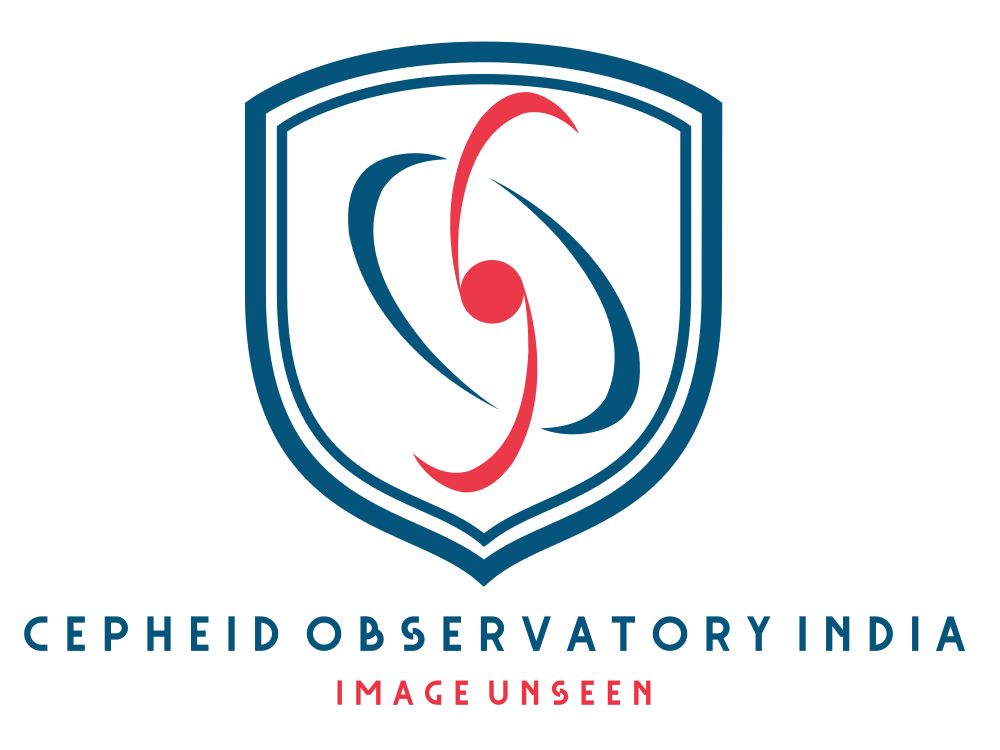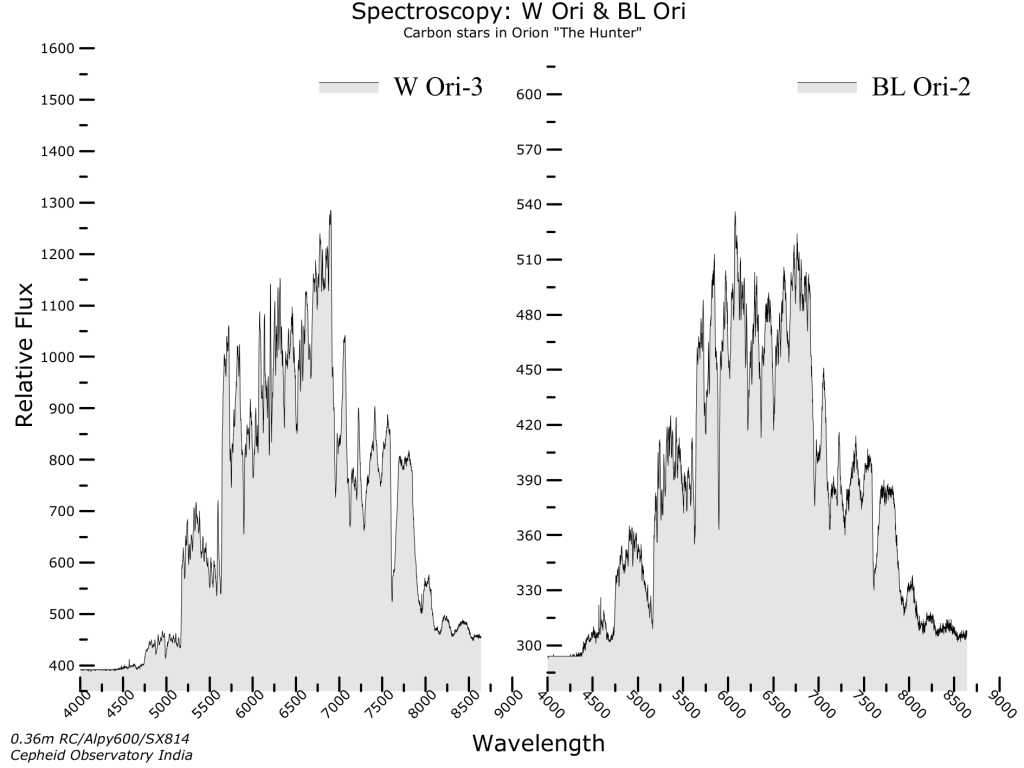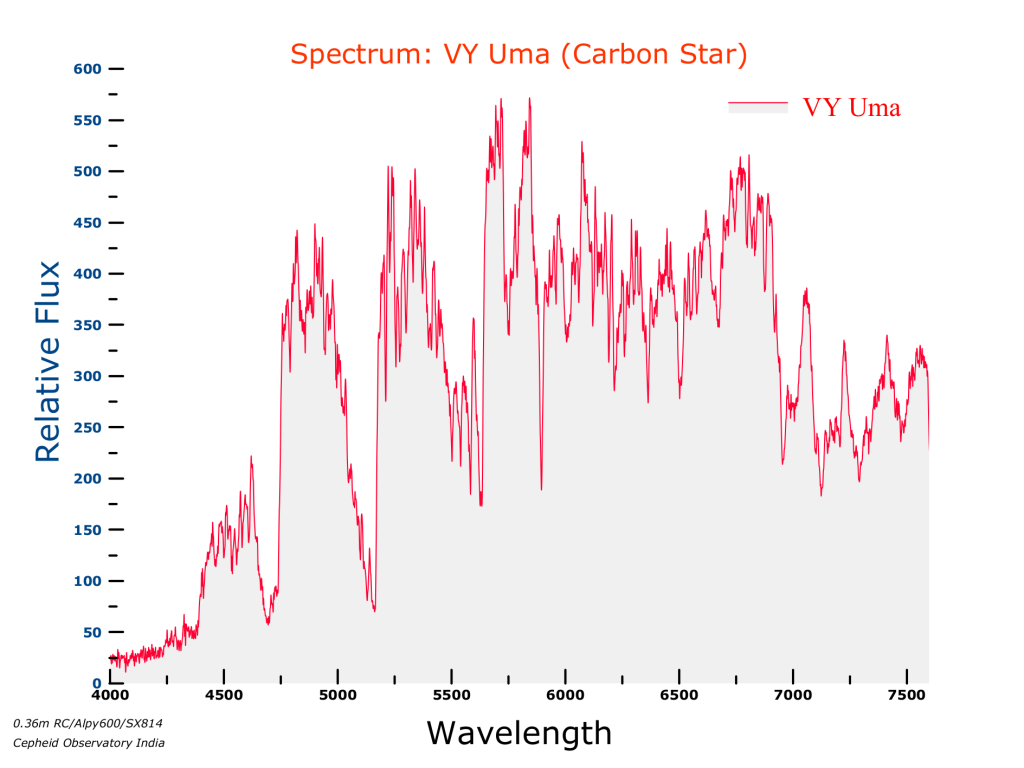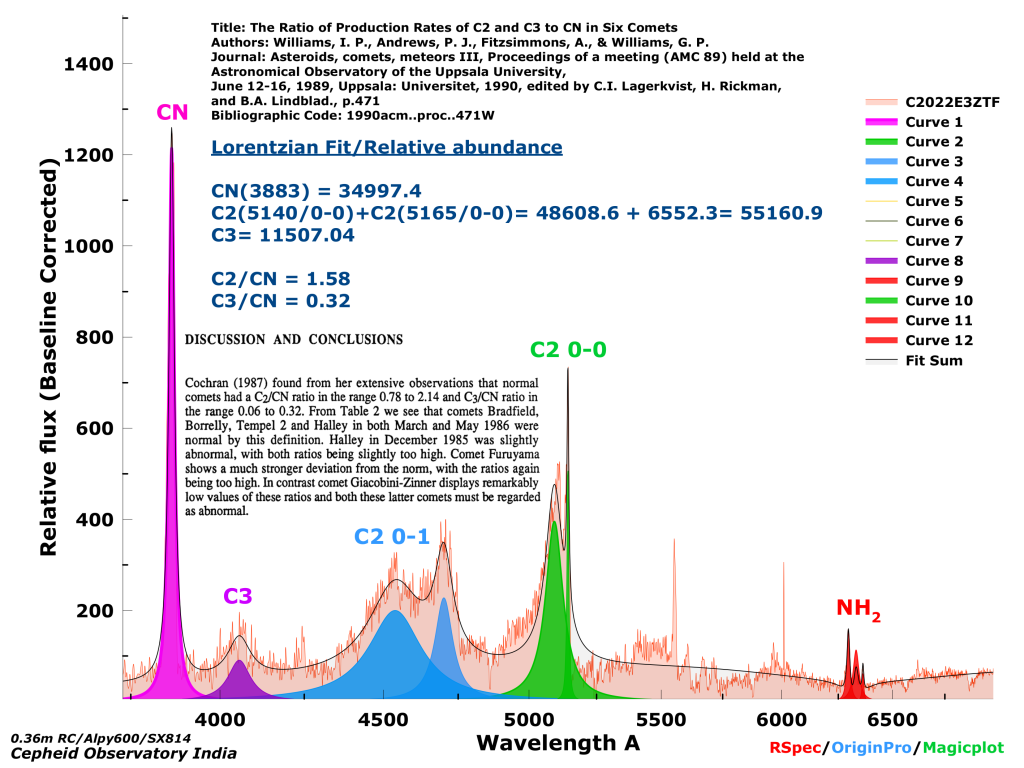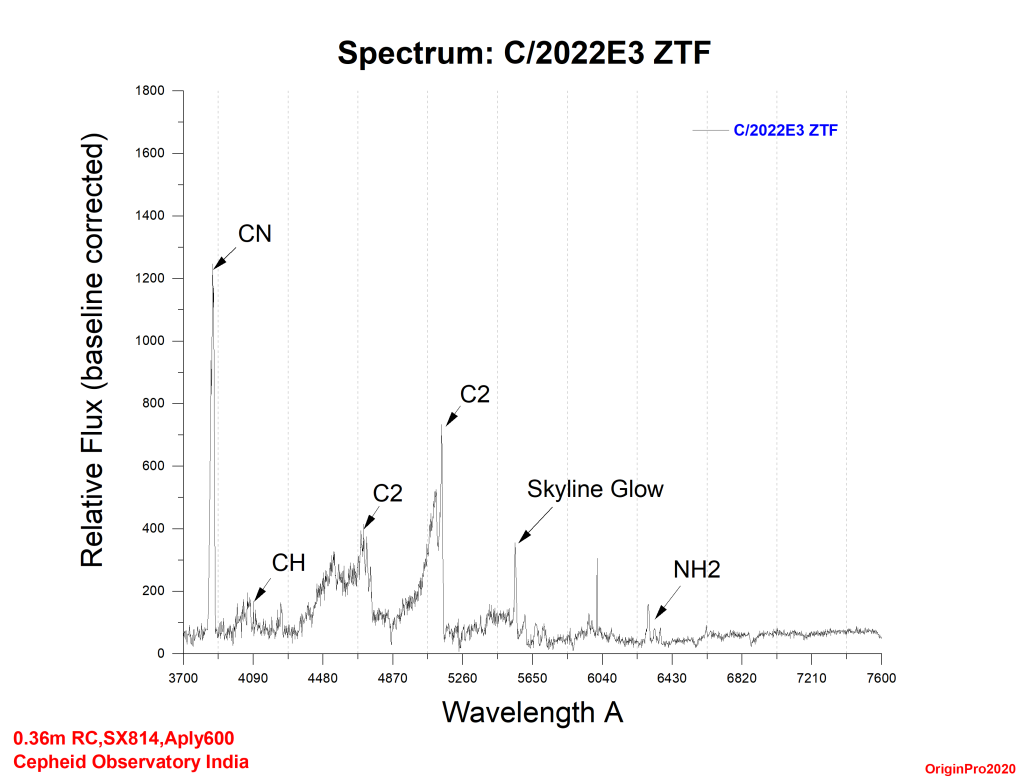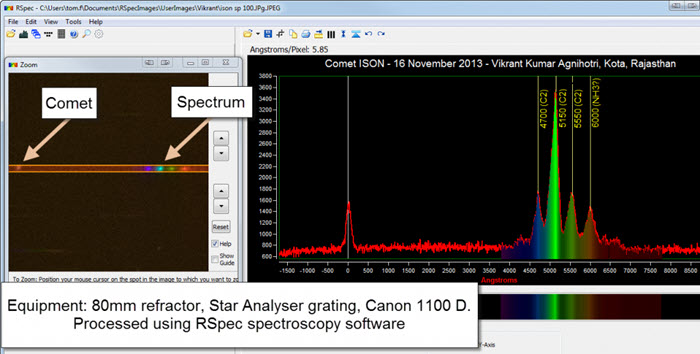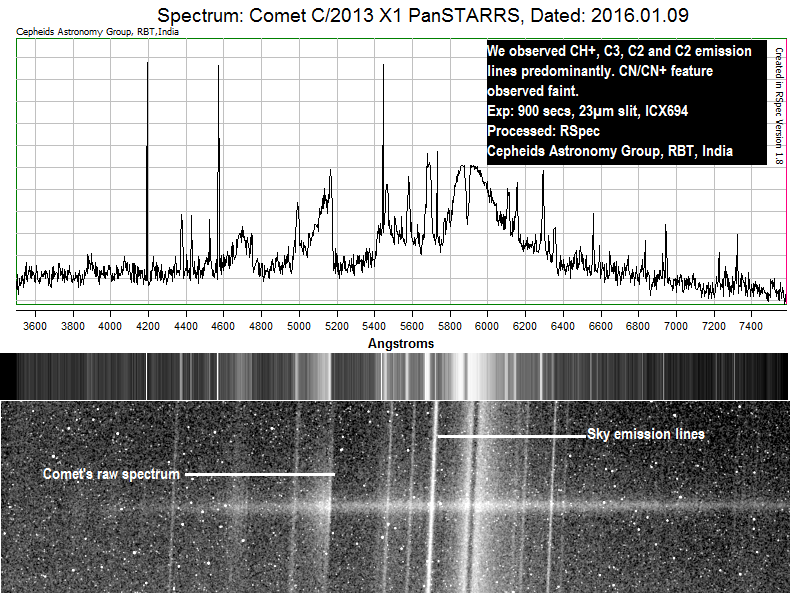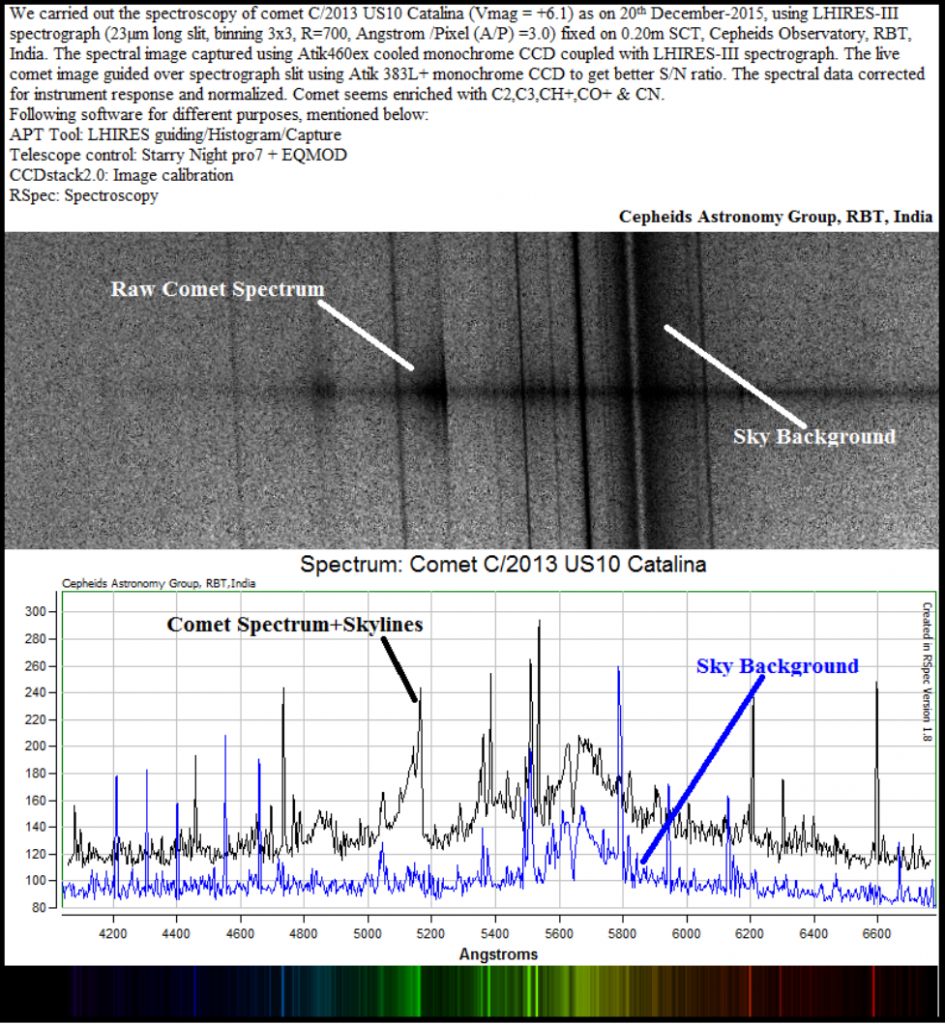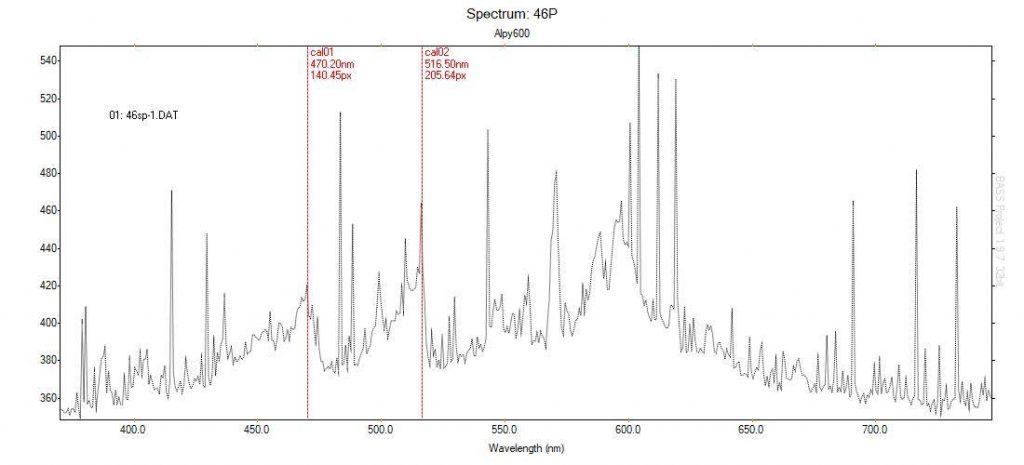RR Lyrae variables are old, low-mass, radially pulsating stars with periods in the range between 0.2 and 1 day. They are a numerous class of variable stars that populate galactic halos, thick disks and globular clusters. In the H-R diagram, RR Lyrae stars can be found in the narrow region where the horizontal branch intersects the pulsational instability strip. Their relatively small range of absolute mean magnitudes (because they lie on the horizontal branch) makes them important distance indicators in both our own Galaxy and those nearby. RR Lyrae stars are also excellent tracers of the chemical and dynamical properties of the oldest observable population of stars, so they give us insight into the earliest history of galaxies. Taking into account the pulsation modes, RR Lyrae stars can be divided into fundamental-mode (commonly referred to as RRab stars, sometimes called RR0 stars), first-overtone (RRc or RR1 stars) and double-mode (RRd or RR01 stars) pulsators. The existence of second-overtone pulsators among RR Lyrae variables (RRe or RR2 stars) is a matter of controversy. https://ogle.astrouw.edu.pl/atlas/RR_Lyr.html
Object: RR Lyrae
DATE-OBS: 2023-10-04T14:24:04.5960 + 2 Days
EXPTIME(Hrs): 5.64
SUBFRMS: 451
OBJCTRA: 19 25 27.872
OBJCTDEC: +42 46 59.05
Binning: 1 X 1
Plate Scale: 1.53″ /Pixel
Orientation: North UP/ East Left
Catalogs & Filter Magnitude Results:
Astrometry Catalog: ATLAS
Photometry Catalog: ATLAS
Imaging Filter: CLEAR
Photometry Mag: +7.6 R
Instruments:
CCD: ICX694M (4.5µm x 4.5µm)
TELESCOPE: 132MM APO, 610mm
PRiSMv11, Tycho10.8.4, Maxim DL
Site:
ORIGIN: Cepheid Observatory, India
SITELAT: +24:55:00:00
SITELONG:+75:33:58:99
Observers:
Cepheid Observatory
Remark:
Sky Clear

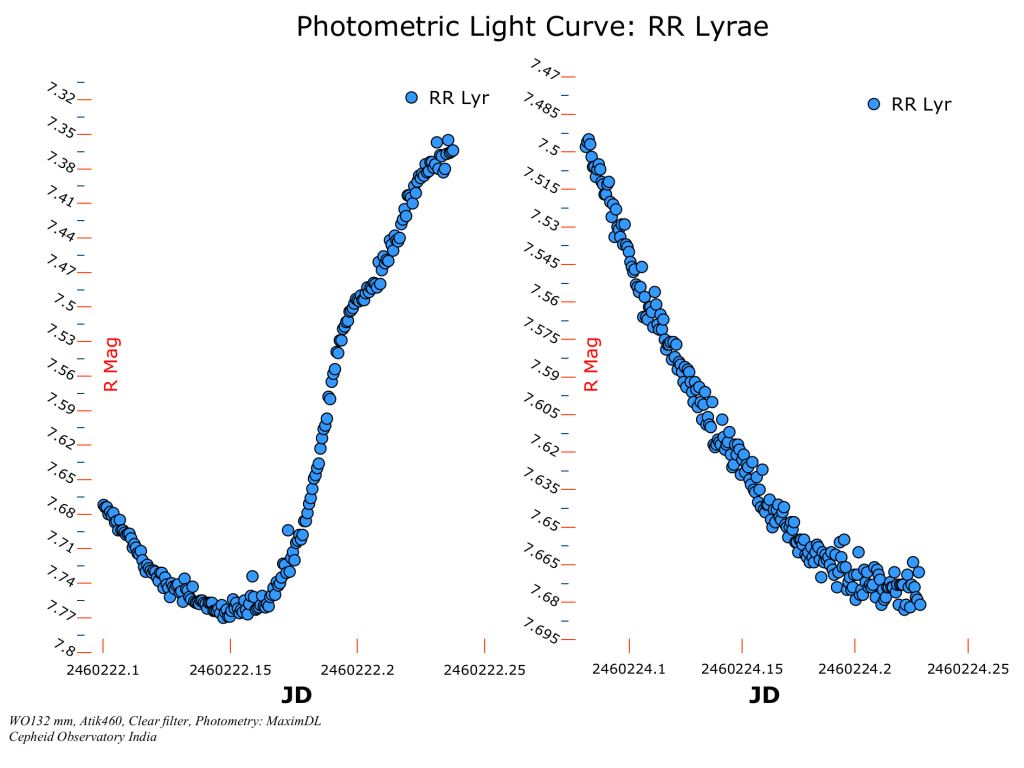
Note: The observations is done partially for 3 days, as object was visible for few hours in every night. The RR Lyrae have period of 0.56689 days and some of portions of possible maxima and minima covered. The exercise is done for learning and interest. https://browse.arxiv.org/pdf/astro-ph/0601432.pdf
